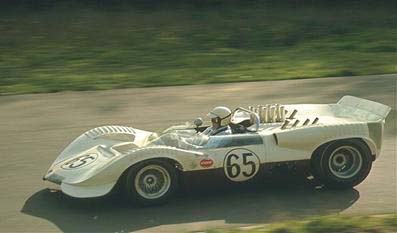Chaparral Cars
Chaparral was a race car project of the Texan racer and designer Jim Hall that existed from 1963 to 1970. The name was derived from the bird ways cuckoo, which is also called Road Runner.
History
The technically revolutionary vehicles recorded, among other things due to the first successful use of automatic transmissions (2D, 1966), huge rear wing (2B, 1967) and the first " race car vacuum cleaner " ( 2J, 1970) from. In this respect, they were pioneers of many other constructions. The Formula 1 took over the rear wing a year later, with the Brabham Brabham copied BT46B the " vacuum cleaner ".
The Chaparral models were designated by year 2 (1963 ), 2C (1965 ), 2D (1966 ), 2E (1966 ), 2F (1967 ), 2G (1968 ), 2H (1969) and 2J (1970). The Chaparral prototype won some races in the United States or drove fastest lap times. Powered she were of Chevrolet Two - suction valve V - eight-cylinder engines. A technical highlight was the type 2J from 1970, which also had a two-stroke engine and side aprons. This ILO snowmobile engine powered two 17-inch fan with a constant speed of 5000 rpm that draw in the air under the car and caused an increased pressure. The additional pressure is given as 900 pounds (4 kN). Thus, the 2J could not drive on the ceiling, as frequently been rumored.
Specifications
European audiences were the vehicles less by victory by Phil Hill / Joakim Bonnier 1966 at the Nürburgring, known as the numerous miniature models of racing cars in the late 1960s, were to be found in any toy shop in the early 1970s.









